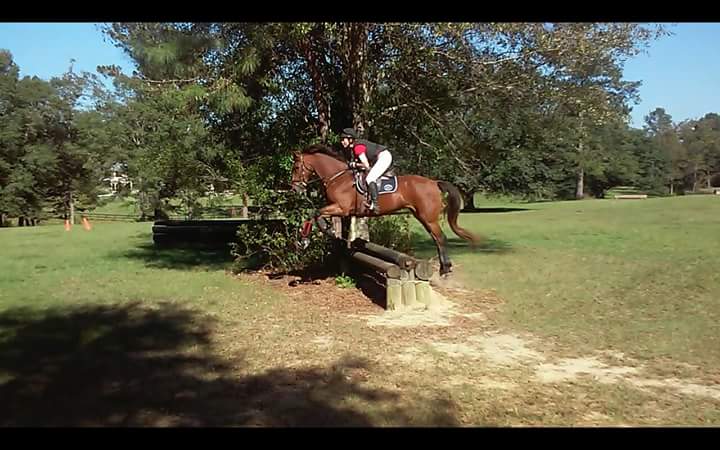How to Stay Fit and Safe for a Lifetime of Riding
by Emily Beasley
 Just the other day, a friend left me speechless when he said this: “You probably don’t have much more time to compete, do you? Aren’t you going to be too old to ride cross country?”
Just the other day, a friend left me speechless when he said this: “You probably don’t have much more time to compete, do you? Aren’t you going to be too old to ride cross country?”
I’m fairly certain smoke began to steam out of my ears. He quickly received an education on how and why I plan to continue to ride until my body just refuses—and then ride on a little while longer! It’s common knowledge that as we age our body systems and fitness naturally decline. Even my grandpa understood this and liked to sing how “that old grey mare just isn’t what she used to be.” Let’s take a look at what naturally occurs in the aging process, as well as things we can do to keep from going prematurely “lame.” After all, my hero Denny Emerson is still eventing into his late 70s.
The human body reaches peak performance during the late teens-mid 20’s. After this peak, different body systems begin to decline at varying rates. During our mid-20’s we begin to experience approximately 1% bone loss each year. Muscle loss is a more gradual process and doesn’t begin until the early 50s. In our 30’s our metabolism, body fat distribution, and body composition begins to change. Once we get “over the hill” in our 40’s or 50’s our nervous system begins to become less efficient (“where did I put my keys?”), hormone levels fluctuate (for both sexes), and it becomes more difficult to develop and maintain fitness, which is also declining as a result of all these changes. Aerobic capacity decreases, we lose muscular strength and endurance, and we become less flexible. The good news is that these effects are gradual, even though it may seem like it all happens overnight! I certainly had a wake-up call during my first softball game as an adult. I thought I could catch every ball that came my way. What a rude awakening—my brain didn’t agree with my body and I felt like I was moving in slow motion!
For equestrians, these changes can have serious implications. Core muscular strength is vital to balance and stability in the saddle. Flexibility and range of motion enable us to move in rhythm with our horses. Decreased joint mobility creates muscular imbalances and increases the incidence of injury. Vision and the nervous system are essential while riding; reaction time can be the difference between life and death when you’re on the back of a 1000 pound animal. As our bones become more brittle (due to changes in mineral distribution) and there is bone loss, breaks and fractures become more likely and are difficult to heal. All of these effects are potentially dangerous and I’m sure these are just a few of the thoughts my friend had when he assumed I would eventually quit riding.
So, how can I possibly intend to avoid riding “retirement” when it can easily be assumed that the potential for injury increases? Because I know that among adults external factors like diet and exercise have a greater influence on body systems and fitness than internal factors (e.g. genetics). There is sufficient evidence from research that physical activity and exercise slow both the physical and cognitive declines associated with aging. There are also protective benefits from a healthy, active lifestyle and we’ve all heard that “an ounce of prevention is worth a pound of cure.”
Fortunately, riding qualifies as physical activity (and sometimes exercise, too). Equestrians already maintain active lifestyles. Whether we’re riding, carrying buckets of water, or tossing around hay bales we’re preventing many of those less-than-desirable declines associated with age. And true exercise (more intentional and focused than simply “daily activities”), is the ultimate prevention prescription. Weight-bearing exercises strengthen bones so they’re less likely to break and aerobic activities maintain cardiovascular endurance so we can stay active. Stretching and Yoga maintains and increases flexibility so there is less injury associated with wear and tear and/or overuse of certain muscles. Simply put, staying active and maintaining a purposeful exercise routine is essential for riders of all ages. It’s the closest thing to the Fountain of Youth we can get and, for equestrians, it’s the most important thing we can do to keep ourselves safe for a lifetime of riding.
I’d love to hear your stories of injury and whether or not exercise and physical activity (or a lack thereof) played a part in prevention or the injury itself. Feel free to share questions or comments by emailing [email protected].
Published in December 2015 Issue

Emily is the owner of ATF Wellness and the creator of Bootcamp4Breeches: Functional Fitness for Equestrians. She coordinates the Health & Physical Education teacher education program at Louisiana State University, is past president of the Louisiana Association for Health, Physical Education, Recreation and Dance, teaches Yoga classes, and researches how women of all ages can develop a positive physical self-concept. She spends her free time eventing with her OTTB, Titan, and TB/Cleveland Bay cross, Bean, in Baker, LA where she and her husband share a small farm with four dogs, three cats, and three horses. You can reach her via email at [email protected]; follow her on Twitter @DrBLovesPE; or like her Facebook page, Bootcamp4Breeches: Fitness Training and Wellness Consulting.





